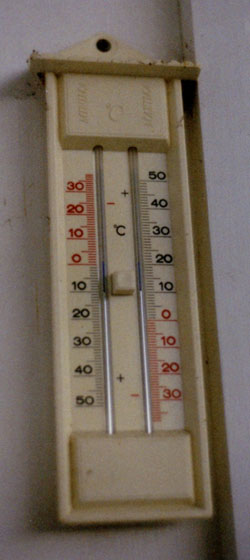Eric Stafne, Mississippi State University
Insect development is linked directly to external temperatures. Essentially, the warmer the temperature, the more rapidly insects develop. In contrast, cooler temperatures suppress development and activity. This doesn’t mean that the insect is damaged when experiencing brief episodes of cold, since many insects have their own built-in antifreeze in the form of glucose, glycerol, and other compounds. Rather, development is slowed or ceases during these brief cold snaps. Insects may possess several different developmental thresholds, or minimum temperatures at which development can occur. Thus, temperature information can be extremely useful to follow or anticipate specific life stages and correctly time scouting and treatment activities. In the case of the grape berry moth (GBM), the traditional developmental threshold is 50ºF; therefore, insect development occurs anytime temperatures exceed this level. Calculating the degree days necessary to attain a specific life stage requires an inexpensive thermometer that measures maximum and minimum temperatures for each day. Daily degree days are then accumulated over a period of time. To calculate degree days use the following formula:
Daily Degree Days = [(Max. temp. F + Min. temp. F) / 2] – 50ºF
Example = [(80ºF + 55ºF) / 2] – 50ºF = 65 – 50 = 15 degree days for that day only
Degree days for each day are added to accumulate total degree days over time. If the calculations for any given day result in zero or a negative number, no degree days are added to or subtracted from the total. Degree days can be a useful tool to anticipate the occurrence of an insect pest as well as its damaging life stages. With this knowledge, appropriate scouting can be done to look for damage thresholds that would necessitate control treatments.
Recommended Resources
How to Manage Pests: Degree Days, University of California
Field Guide for Integrated Pest Management in Pacific Northwest Vineyards, Washington State University
Reviewed by Eric Rebek, Oklahoma State University and Tim Weigle, Cornell University

